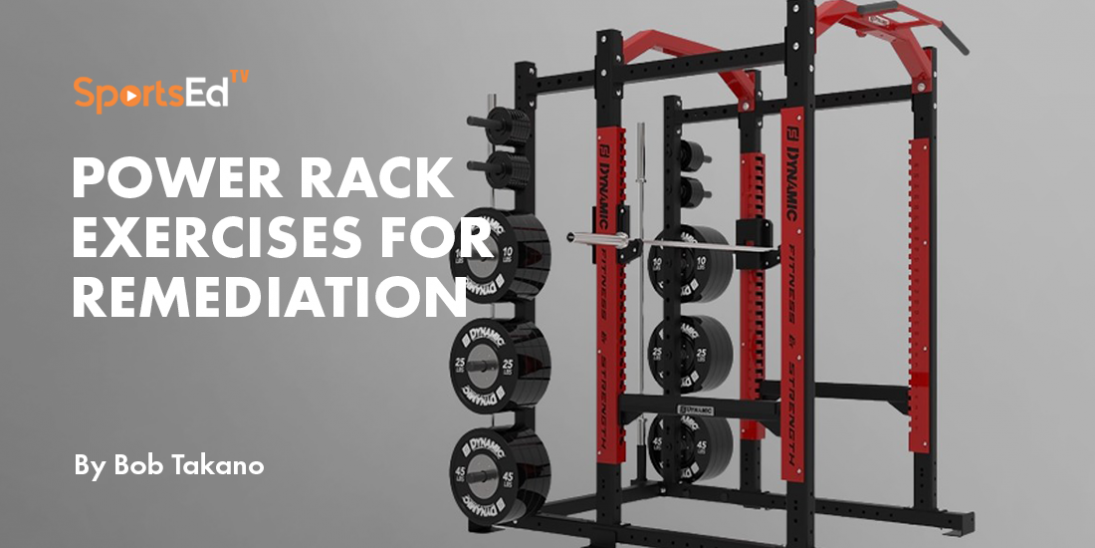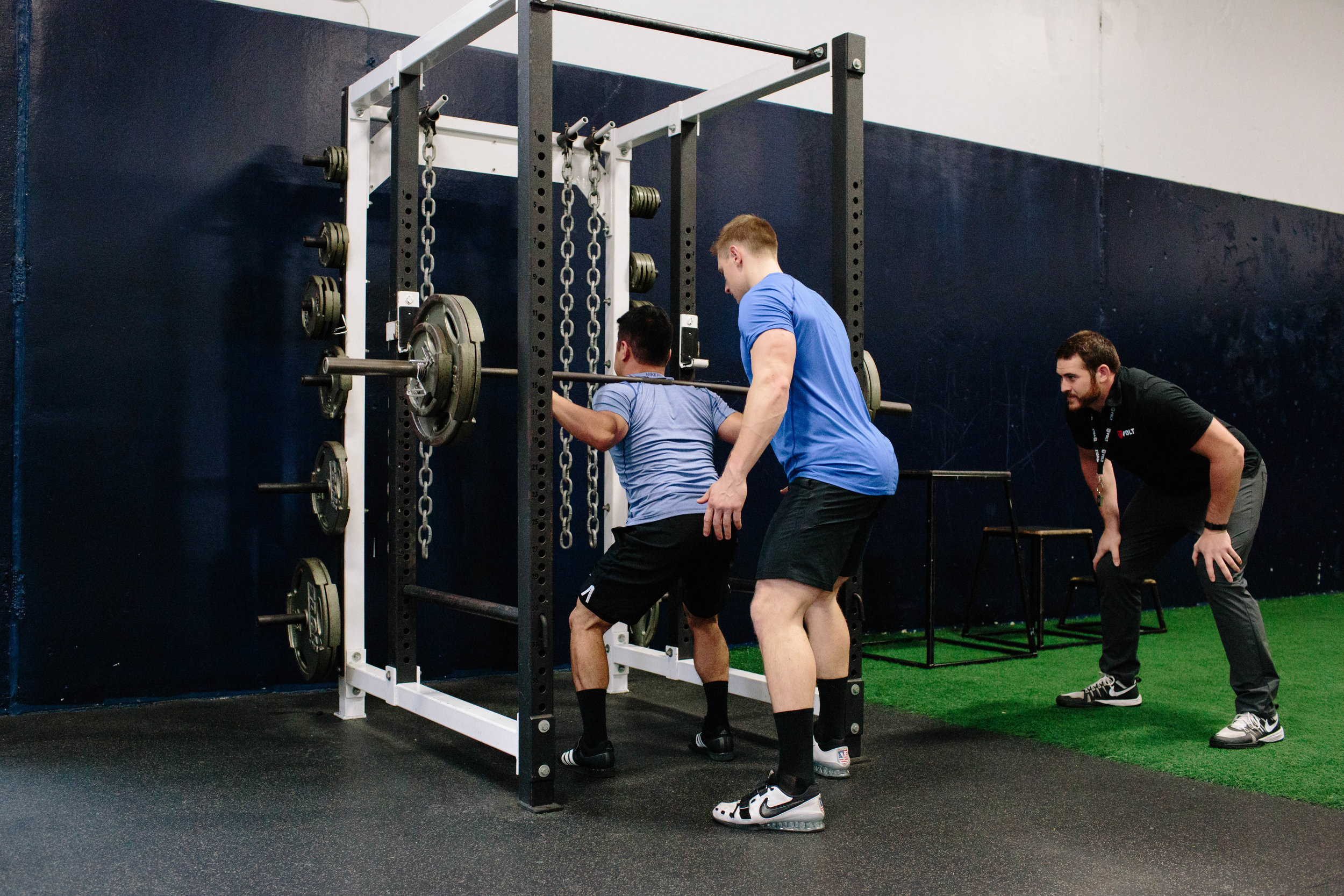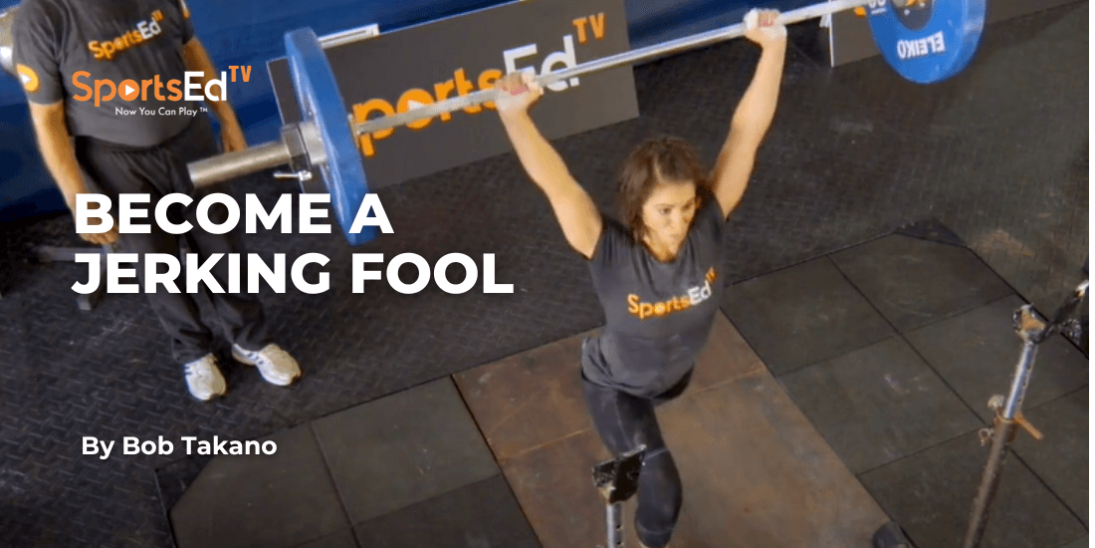Strength And Conditioning, Weightlifting
Welcome and thanks for visiting...

Power Rack Exercises For Remediation

Exercise equipment comes and goes depending on the tastes of the target market. One piece of equipment that has surprisingly stood the test of time is the Power Rack, a piece of equipment first introduced by Bob Hoffman in 1962. It was originally designed to accommodate a training modality developed by Hoffman called Functional Isometric Contraction. This approach would provide strengthening benefits only at the specific point of contraction. Because of this limited value, FIC has been largely abandoned, but the Power Rack is found in thousands of gyms even though most trainees are completely at a loss as to how to use it.
It's generally used to alleviate the trouble of deadlifting a bar before performing barbell curls or for bench pressing.
It does have value for weightlifters who need to work through difficult areas of developing leg strength and for developing overhead strength and kinesthetics. Here are some exercises that you can perform in the power rack to improve your lifting once the curling guys get finished.
ECCENTRIC ONLY SQUATS (BACK OR FRONT)
This is a great movement for those who have reached a stage of zero progress in squatting either front or back. It does require two experienced spotters to help raise the bar as there should be no concentric contraction.
Place the J-hooks on the inside of the rack at the lifter’s normal squatting height.
Place the long pins at the height of the lifter’s bar in the very bottom position of the squat.
Load the bar to 80% of the proposed max.
The lifter takes the bar on shoulders (either front or back) and steps back. The lifter then begins squatting down to a 12-second count. One of the spotters can provide the cadence. At the bottom of the movement, the bar is resting on the pins.
At this point, the lifter rises up with the bar still on the shoulders. The lifting, however, is done by the two spotters so that the lifter is not generating significant force. Once the lifter is standing fully erect, the two spotters can release the bar, and the next rep can commence.
5 sets of 3 reps should be sufficient.
 Courtesy of Volt Athletics
Courtesy of Volt Athletics
CONCENTRIC-ONLY SQUATS (BACK OR FRONT)
This is another helpful exercise for lifters who have reached a lag in their squatting progress. It also requires two experienced spotters.
The setup of j-hooks and long pins is the same as for eccentric-only squats.
The bar is loaded to 80% or more while resting on the long pins.
The lifter is positioned under the bar and then proceeds to drive up until standing erect. The two spotters then lower the bar to the long pins while the lifter squats down and allows the bar to rest on the pins before commencing the next rep. 4 sets of 4 are recommended.
SQUATTING FROM A STICKING POINT (BACK OR FRONT)
In this variant, the pins are placed so that the resting bar is at the point in the pathway where squatting is most difficult. The lifter is positioned under the bar and then lifts the bar to full extension, and then lowers the bar back to the long pins. The bar must be allowed to rest on the pins before commencing the succeeding repetition. These should be performed for 3 sets of 3 reps at 80% or more in addition to the regular squatting program.
OVERHEAD SUPPORTS
The long pins are placed at a height that is 10 cm (ca 4 inches) lower than the full overhead lockout. The bar is placed on the pins and is loaded to 100% of the maximum jerk or more. The lifter is positioned under the bar with a jerk grip, the arms fully extended, and the knees bent in a quarter squat. The exercise is performed by extending the knees. The arms remain straight throughout the movement. 4 sets of 3 reps performed in addition to the usual jerking movements are satisfactory.
JERK PRESSOUTS
The long pins are placed at a height that is 10 cm (ca 4 inches) lower than the height of the bar when the arms lock in the split jerk position. The bar is loaded to approximately 80% of the goal maximum clean &; jerk. The lifter assumes a split position with the head directly under the bar and the hands gripping the bar with the bent elbows pointing to the sides.
The only movement is that of the arms extending. The legs should remain frozen in the split position. The repetition is completed when the elbows are locked overhead. The bar is then lowered to the pins, where it is allowed to rest before the next repetition commences. 4 sets of 3 reps should be performed at the end of the training in addition to the usually programmed jerk exercises.
JERK RECOVERIES
The long pins are placed at a height equal to the height of the bar when the bar locks overhead while the lifter is in a split at the completion of the jerk.
The lifter assumes the split jerk position under the bar with the arms extended and the legs in a split. The lifter commences the recovery by leaning back slightly and concurrently pushing with the lead leg. When the lead leg is nearly extended, it is pulled back and placed directly under the bar. The arms do not bend or extend.
The rear leg then steps forward until it is aligned with the lead leg. Both legs can then extend, and the movement is completed. The bar can then be lowered to the pins by bending both legs.
Once the bar is resting on the pins, the lifter can then place the feet in the split stance and commence the next repetition.
Once again, as with all auxiliary exercises, use them when needed and discard them when the problem has been solved. Good luck with your training!
For those in search of the most credible training information based on fifty years of coaching experience, the Takano Weightlifting Coaching Membership is a vast collection of videos and written content touching upon a complete approach to coaching weightlifting. Coaches of beginners and elite athletes will be able to discover helpful content. Lifters will find this information valuable as well, although it is written from a coaching perspective. Check out this link Takanoweightliftingcoaching, to find out more and sign-up.








